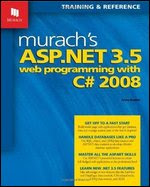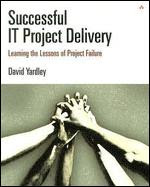Download Free rare ebooks here in ebooksplug no nonsense, just deal with it. Ebooks listed here is for preview purposes only if you like the book after you read the preview here you have to delete the file and buy the original one in their respective stores.
Randomize books
Saturday, April 24, 2010
Murach's ASP.NET 3.5 Web Programming with C# 2008
This book is for C# developers who want to learn how to develop professional web applications with Microsoft's ASP.NET 3.5. The first 4 chapters present a quick-start course that works both for beginners and for experienced web developers who are new to ASP.NET. Then, the next four sections present: the skills you need for any business application, the skills you need for database applications, the skills you need for e-commerce applications, and the skills you need for developing code that can be reused in other web applications. Along the way, you'll learn about .NET 3.5 enhancements that streamline web development, like the ListView and DataPager controls, LINQ, and AJAX.
Fuzzy Logic-Based Algorithms for Video De-Interlacing
This book is organized in five chapters. In Chapter 1, some basic concepts are explained to completely understand the contribution of the algorithms developed in this research work. The evaluation of how motion is present and how it influences on de-interlacing is studied in Chapter 2. The design options of the proposed fuzzy motion-adaptive de-interlacing algorithm is studied in Chapter 3. A spatial interpolator that adapts the interpolation to the presence of edges in a fuzzy way is developed in Chapter 4. A temporal interpolator that adapts the strategy of the interpolation to possible repetition of areas of fields is presented in Chapter 5. Using both interpolators in the fuzzy motion-adaptive algorithm described in Chapter 3 clearly improves the de-interlaced results.
Domain-Specific Model-Driven Testing
oftware reuse and software quality are increasingly important topics in today's software engineering both for researchers and for practitioners. The design and implementation of tests is especially challenging when tests are conceptualized for different variants and versions of an application. Stefan Baerisch applies a combination of feature modeling and code generation, for which he uses a model-driven approach, in order to facilitate the design of tests by non-programmers. Thus, the reuse of tests, represented by abstract test models, for different systems under tests is made possible. The approach uses code generation to allow test execution on heterogeneous and changing implementations. This combination of modeling and code generation allows for a more integrated and more efficient testing process.
Subscribe to:
Comments (Atom)




